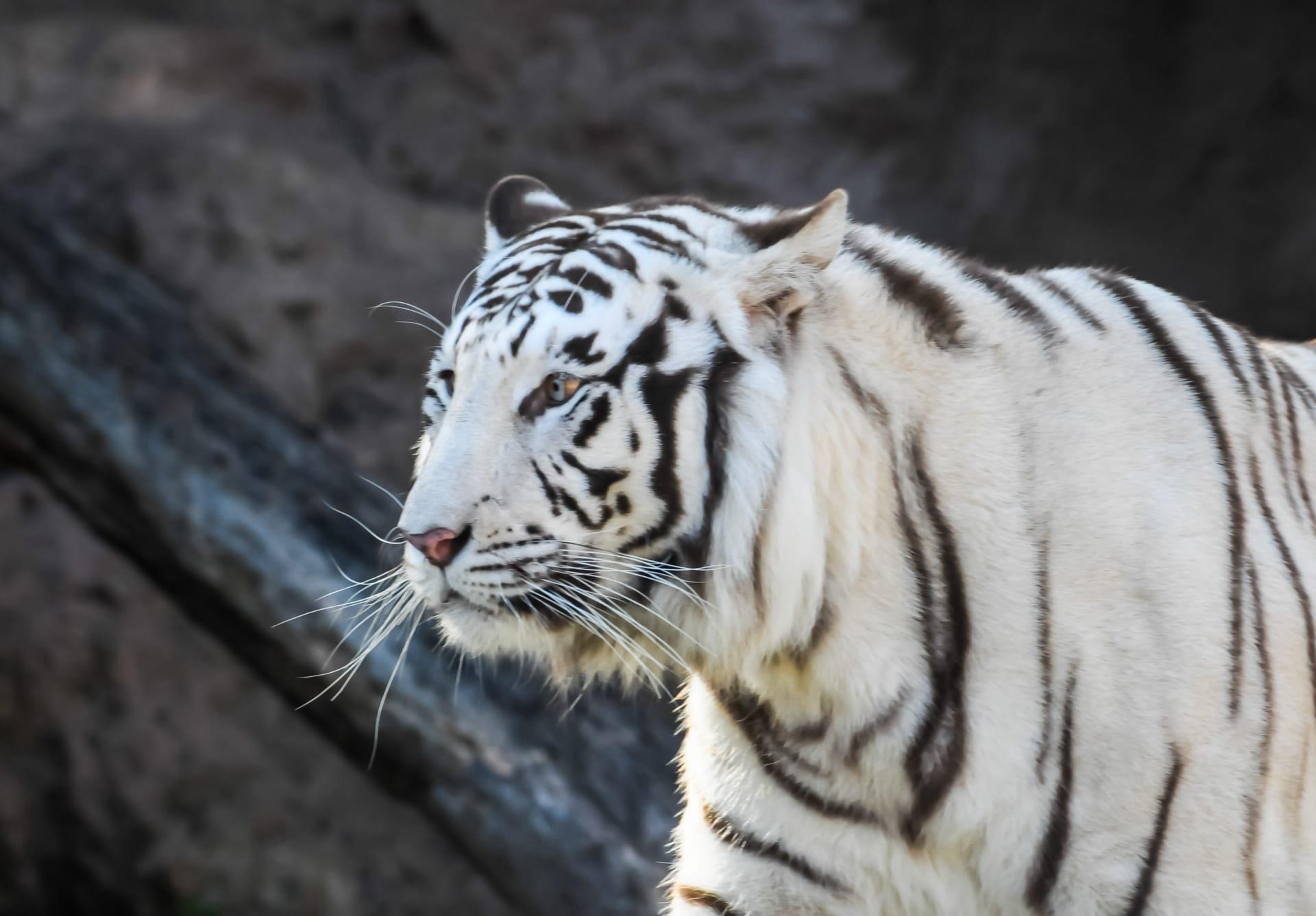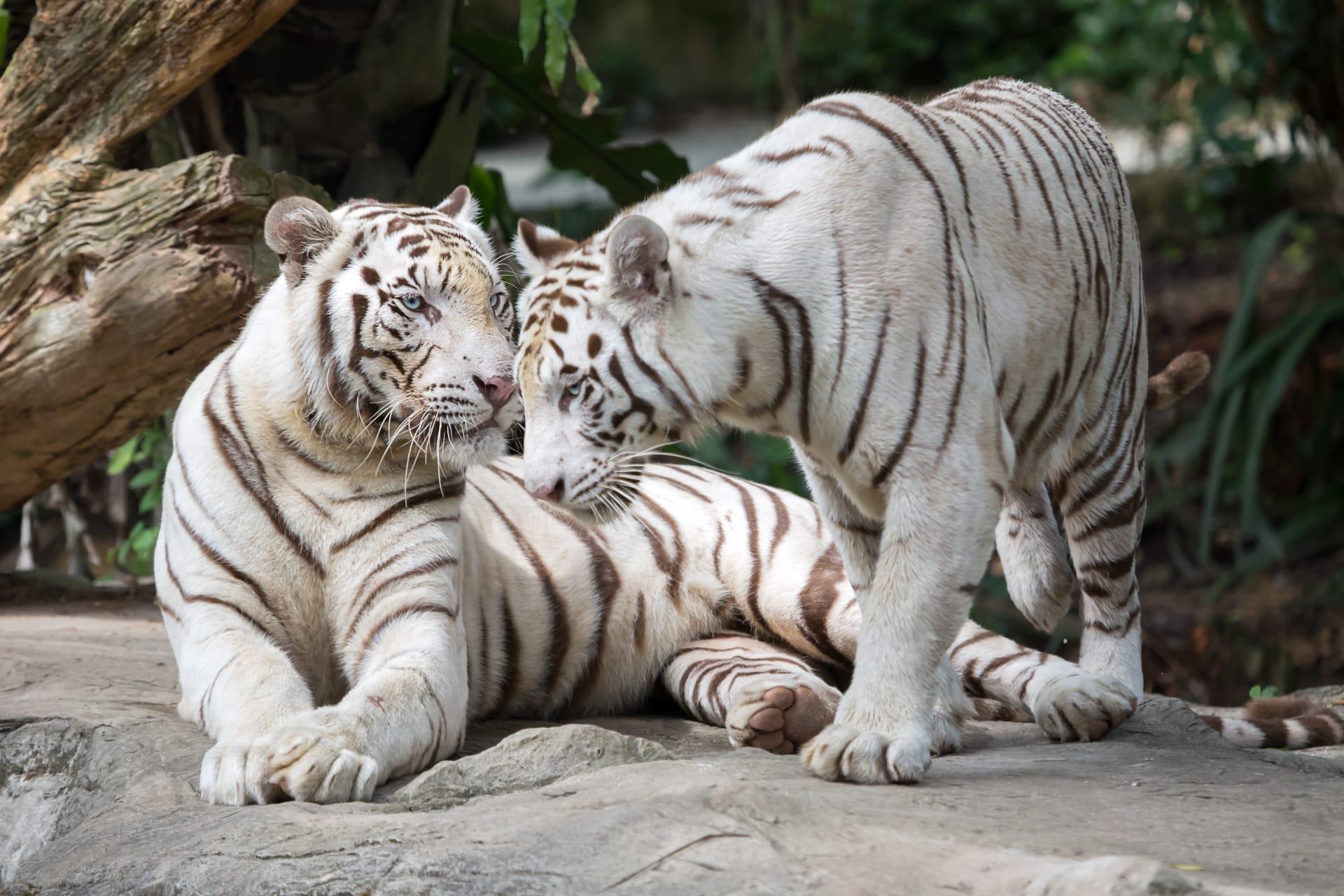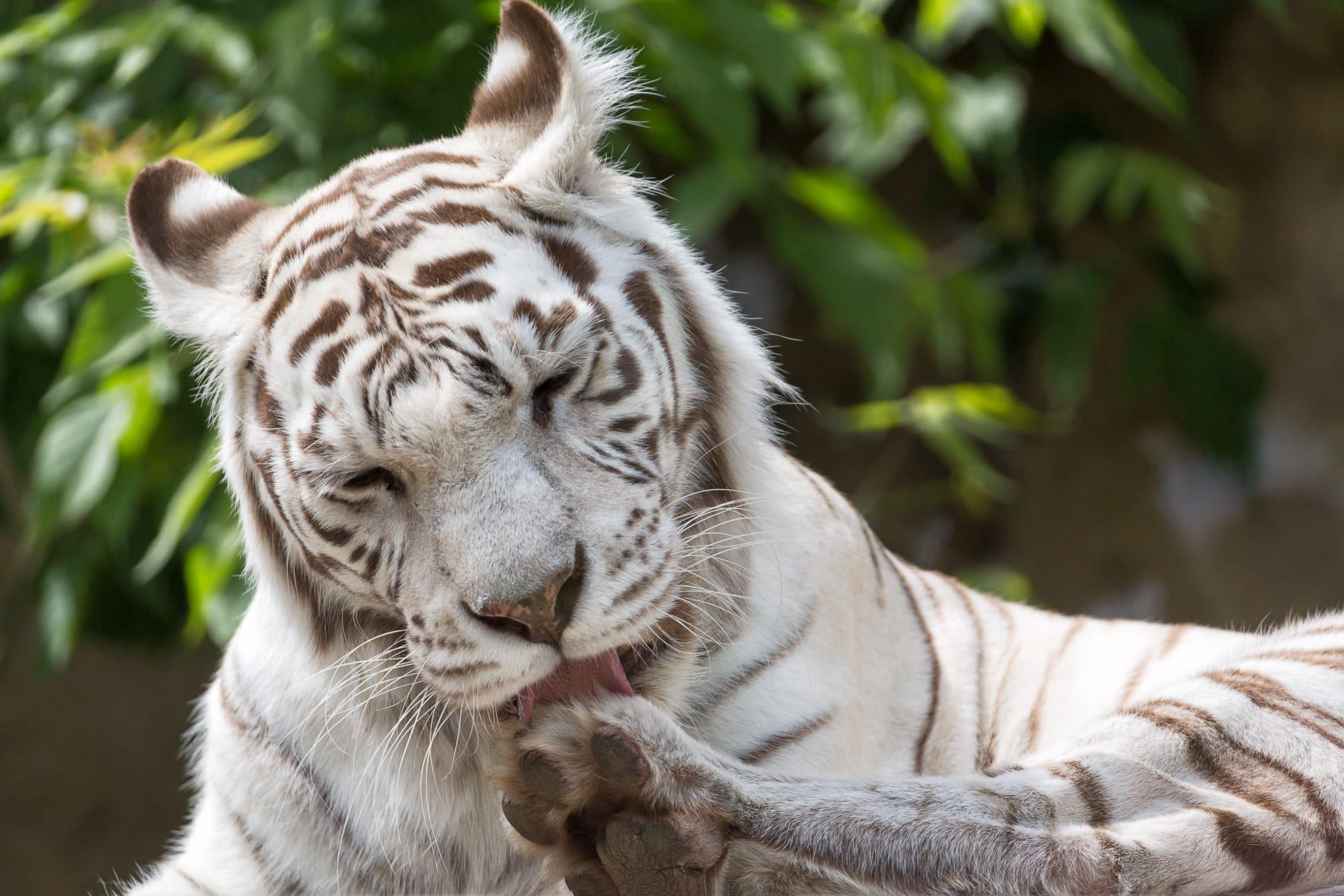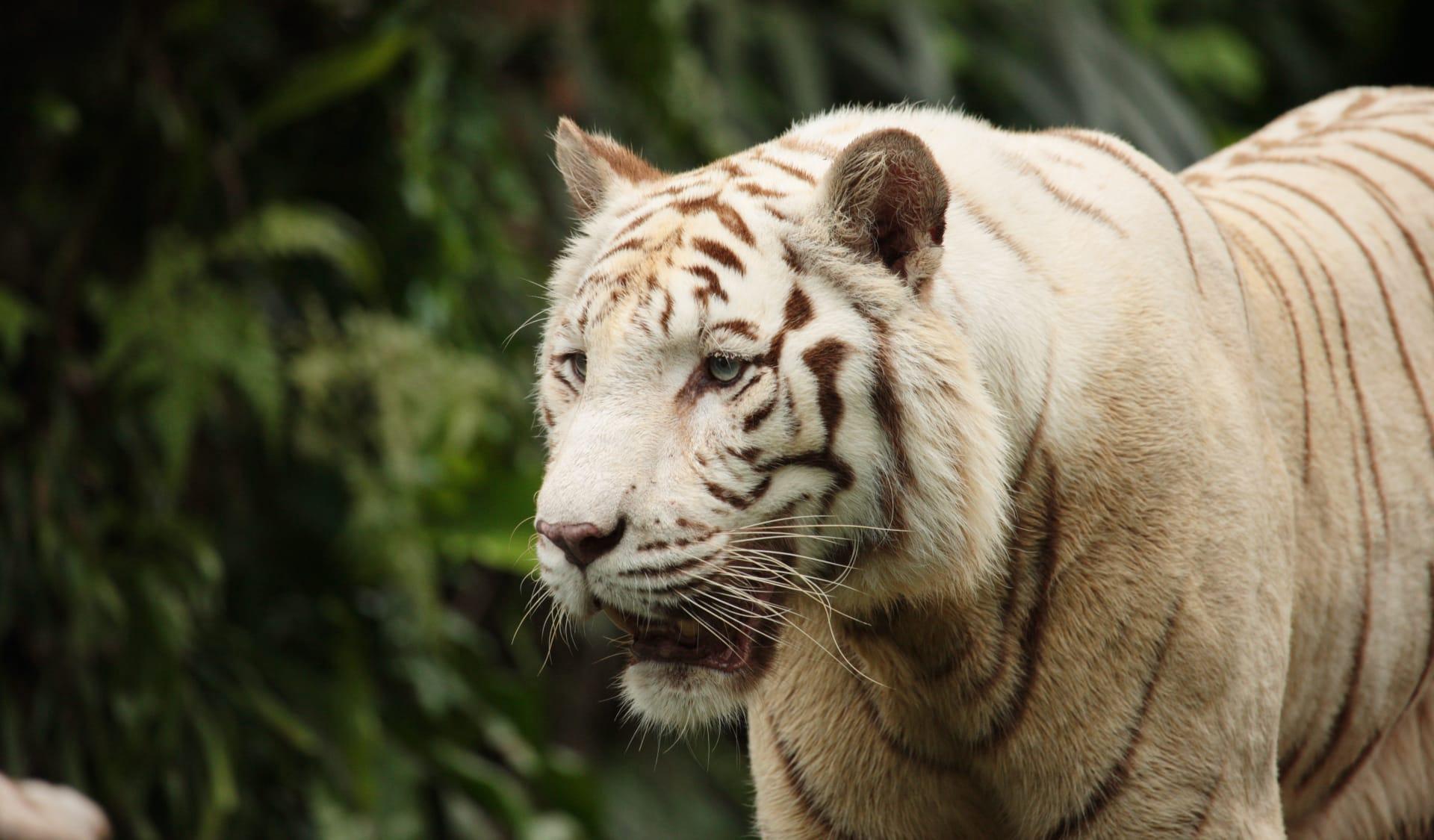White Tiger Characteristics
- Home /
- Mini Encyclopedia /
- Animal /
- White Tiger Characteristics
1
White tigers, majestic and rare, are distinguished primarily by their unique fur color, which results from a genetic mutation. With a typical body length ranging from 8 to 10 feet and a weight that can exceed 500 pounds, they are among the largest members of the cat family. These powerful predators can live up to 15 years in the wild, but in captivity, their lifespan can extend up to 20 years due to better living conditions and medical care.
One of the most remarkable organs of the white tiger is its eyes. Unlike most felines, white tigers often have blue eyes, a trait rarely found in their orange counterparts. These striking eyes are not just beautiful but are also incredibly adaptive, allowing them to see effectively in low-light conditions. This is essential for hunting at dawn and dusk, times when their prey is most active.

2
Question: Why are white tigers white?
Answer: The distinctive white fur of white tigers is due to a rare genetic mutation affecting a gene known as SLC45A2. This mutation leads to a lack of pheomelanin, the pigment that normally produces the orange color in Bengal tigers. However, it’s important to note that white tigers are not albinos; they still produce the pigment eumelanin, which is why they retain the black stripes. This mutation doesn't affect their physical abilities or health, though it can result in certain challenges in the wild, such as camouflage and hunting.

3
White tigers are known for their agility and strength, which play a pivotal role in their hunting strategies. They can reach speeds of up to 35-40 miles per hour in short bursts, essential for catching fast-moving prey. Furthermore, they are excellent swimmers, often using water bodies to hunt or escape the heat.
In terms of hunting, white tigers are solitary predators, relying on stealth and strength to catch their prey. They primarily feed on large ungulates such as deer, wild boar, and buffalo. A white tiger might consume up to 40 pounds of meat in one feeding session, though they typically eat less and can go up to two weeks without food after a large meal.

4
White tigers are commonly found in dense jungles, mangroves, and swamps in regions like India and Bangladesh, though they are significantly rarer in the wild due to hunting and habitat loss. These environments provide ample cover and a rich supply of prey, which are crucial for their survival.
Reproduction in white tigers follows similar patterns to other Bengal tigers. A female white tiger reaches sexual maturity at around 3-4 years of age and can give birth to a litter of 2-6 cubs after a gestation period of approximately 104 days. Cubs are born blind and depend on their mother for the first few months of life. Interestingly, not all offspring of white tigers inherit the white fur, as this trait follows a recessive gene pattern.

5
Book: "The White Tiger: A Novel" by Aravind Adiga. This 2008 Booker Prize-winning novel, set in India, explores the journey of a village boy, Balram Halwai, to becoming a successful entrepreneur. While not directly about the animal, it uses the metaphor of the white tiger to represent rarity and ambition in a rapidly changing India.
Book: "Siege of the White Tiger" by Geoffrey Malone. Published in 1996, this book delves into the world of a young white tiger named Rana. The story, set against the backdrop of the Indian jungle, offers a thrilling and empathetic insight into the challenges and adventures faced by a white tiger in the wild.